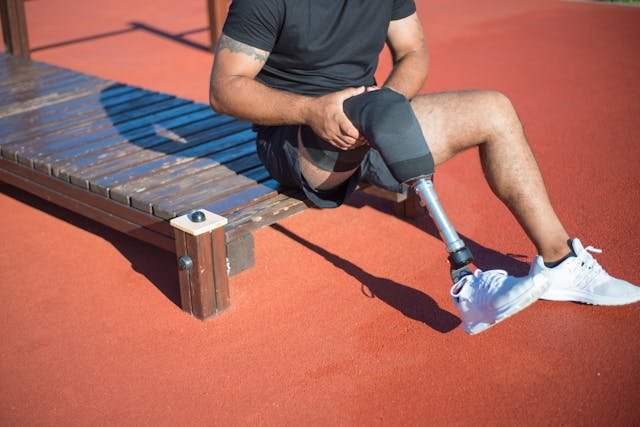When a child is born with an upper limb that is missing or underdeveloped, it can be a confusing and emotional experience for families. Questions about mobility, independence, and daily life naturally come to mind. The good news is that with modern prosthetic care and early intervention, children with congenital upper limb deficiencies can lead active, confident lives. Understanding your options and knowing when to take action makes all the difference.
At Robobionics, we’ve worked with many families across India who are navigating the challenges and possibilities of limb differences. Whether your child was born without a hand, fingers, or a full arm, prosthetic solutions are available to match their needs at every stage of life. In this article, we will walk you through what congenital upper limb deficiencies are, what prosthetic solutions exist, and how to make informed decisions from the very beginning.
Understanding Congenital Upper Limb Deficiencies
Congenital upper limb deficiencies are conditions where a baby is born without part or all of their arm, forearm, hand, or fingers. These differences occur during pregnancy, usually in the first few weeks of development, when limbs are beginning to form.
How These Limb Differences Happen
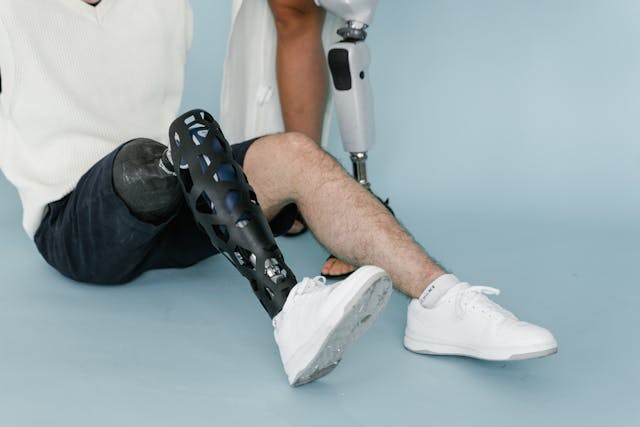
The exact cause of congenital upper limb deficiencies is often unknown. Sometimes, they are linked to genetic changes or syndromes. Other times, they may result from issues with blood supply or other disruptions during pregnancy. Most parents are surprised by the diagnosis, and in many cases, it is not detected until birth.
It is important to understand that nothing a parent did or didn’t do caused this. These conditions usually occur naturally and are not related to anything preventable. What matters now is understanding how to support the child as they grow.
At Robobionics, we help families feel empowered, not overwhelmed. Our focus is on what’s next—how to support the child with tools, care, and knowledge.
Types of Limb Deficiencies
Upper limb differences can vary widely. Some children are missing an entire hand, while others may be missing only one or two fingers. Some may have a shorter arm or a forearm that ends before the wrist. The exact shape and length of the residual limb influence what type of prosthetic will be most helpful.
The most common classifications are transverse deficiencies, where the limb ends across a certain level, and longitudinal deficiencies, where certain bones or fingers are missing but others are present. Both types require different kinds of support.
At Robobionics, we begin by evaluating the limb carefully to understand its structure, flexibility, and muscle strength. This helps us create the most suitable prosthetic plan for each child.
What These Differences Mean for Development
Many children with upper limb deficiencies adapt very well, especially when they are supported early. They learn to do most tasks using their remaining limb or other body parts. However, having a prosthetic can help with balance, posture, and two-handed activities, especially as the child begins school and daily tasks become more complex.
Prosthetic fitting is not about fixing something broken—it’s about offering more possibilities. When children are given the right support early, they grow up with more confidence and less hesitation.
At Robobionics, our goal is to provide more than a limb—we provide comfort, adaptability, and long-term care that supports natural development.
When to Begin Prosthetic Fitting for Upper Limb Deficiencies
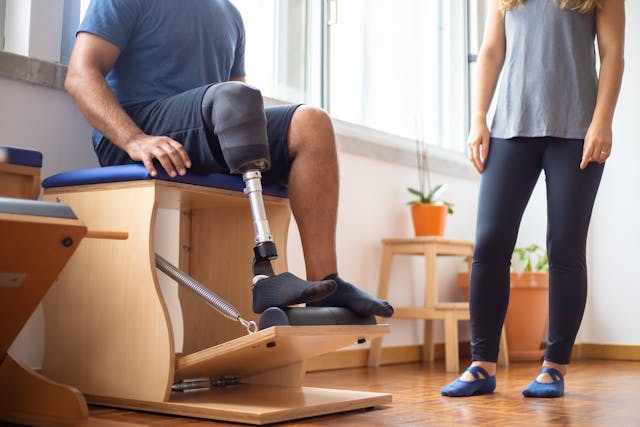
Timing is a big part of success with pediatric prosthetics. Starting too early may not be helpful, but starting too late can lead to habits that are harder to change. Understanding the right time to begin makes the journey easier for both the child and the family.
The Ideal Age to Start
Most children with upper limb deficiencies begin using a prosthetic between six to nine months of age. This is usually the time when they begin sitting on their own and reaching for toys. At this stage, introducing a passive prosthetic can help with balance and early use of both sides of the body.
The first prosthetic is often simple, designed to be light and easy to wear. It does not need to perform complex functions. It simply helps the child get used to the shape, feel, and presence of a limb. This early exposure can improve long-term acceptance and make later upgrades easier.
At Robobionics, we offer prosthetic starter kits for infants, made from soft, skin-friendly materials and designed to grow with the child’s needs.
Physical and Emotional Readiness
Every child is different. Some adapt quickly and enjoy exploring new tools, while others may need more time. Watching for signs of readiness—like reaching, crawling, or exploring—is more helpful than just going by age. Emotional readiness also matters. Children are more open to using prosthetics when they are curious and supported in a positive environment.
Prosthetics should be introduced gradually, starting with short periods and increasing as the child shows interest and comfort. It should never be forced, but gently encouraged with play and interaction.
At Robobionics, we involve families in the process, guiding them on how to introduce the prosthetic in a natural, stress-free way that feels like play rather than therapy.
The Role of Early Therapy
Therapists play a key role in early prosthetic use. Occupational therapy helps the child use both limbs together, improves motor control, and supports natural movement. Physical therapy can help with posture and coordination, especially when the prosthetic is first introduced.
Therapy also supports parents, helping them learn how to encourage use at home through daily routines and games. It turns everyday moments into learning opportunities.
Robobionics partners with therapists to ensure our prosthetics work hand-in-hand with the child’s therapy goals. This team-based approach ensures steady progress and better outcomes.
Prosthetic Options for Congenital Upper Limb Deficiencies
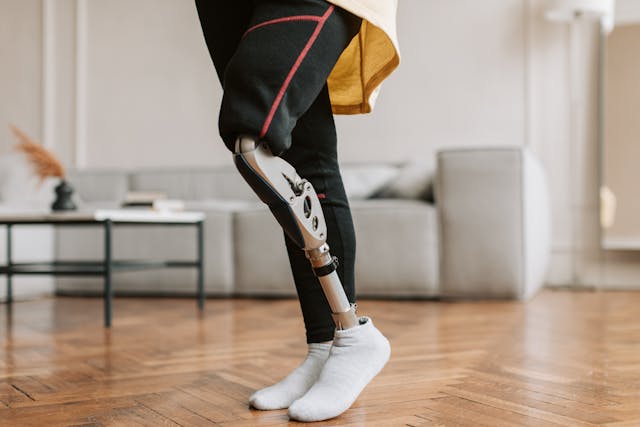
Choosing the right prosthetic is not about finding the most advanced model. It’s about matching the child’s needs, stage of development, and lifestyle. Different types of prosthetics serve different purposes, and many children will move through several types as they grow. Each device plays a role in helping the child explore, adapt, and gain confidence in using both sides of their body.
Passive Prosthetics for Infants and Toddlers
The first prosthetic a child usually receives is passive. This means it doesn’t have moving parts or grip features. Its main job is to support posture, symmetry, and balance. For infants and toddlers, passive prosthetics help them sit, crawl, and interact with their environment using both sides of their body.
Passive limbs are designed to be as light and soft as possible. They are often made with flexible materials and gentle padding to avoid pressure on sensitive skin. These early devices help children learn body awareness and get comfortable with the idea of using both limbs during movement and play.
At Robobionics, our passive pediatric prosthetics are tailored for comfort and simplicity. We design them to be worn during daily activities so they feel like a natural part of a child’s life, not something extra they need to manage.
Body-Powered Prosthetics for Active Use
As children grow and begin engaging in more complex tasks—like playing with blocks, riding a cycle, or using utensils—they may benefit from a body-powered prosthetic. These prosthetics use cables and harnesses connected to the child’s shoulder or back muscles to open and close a basic grip or hand.
The benefit of this type of prosthetic is that it doesn’t rely on batteries or sensors. The child controls the movement through natural body motion. It gives them more independence and a sense of control, especially during school-age years when tasks become more detailed.
Robobionics offers custom body-powered solutions that are adjusted to match the child’s range of motion and comfort. We work closely with families and therapists to make sure the fit encourages consistent use without causing strain.
Myoelectric and Functional Hands for Older Children
For older children and teens, myoelectric prosthetics become a strong option. These devices use small electrical signals from muscles in the residual limb to open and close the hand. Myoelectric prosthetics allow for more natural, precise movement and can be programmed to perform a variety of tasks, such as gripping, pointing, or holding objects.
These prosthetics require more training and are heavier than passive limbs, so they’re best introduced when a child is developmentally ready to take on more responsibility and learning. The ability to perform more detailed movements makes them useful for school tasks, sports, and creative hobbies.
At Robobionics, our Grippy™ myoelectric hand is designed to be lightweight, easy to control, and responsive to the unique needs of younger users. We provide guided training and support to help each child use it effectively and confidently.
Managing Growth, Upgrades, and Long-Term Prosthetic Care
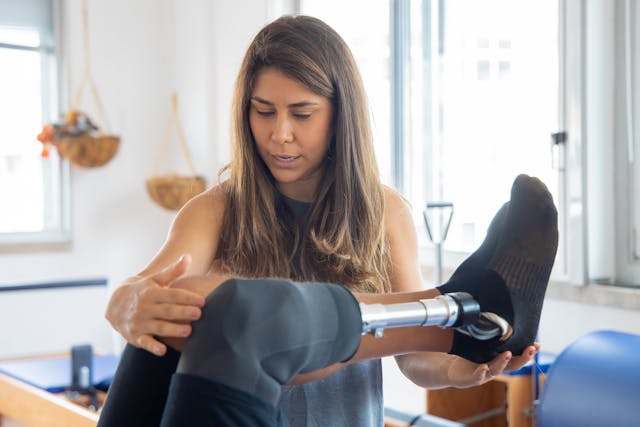
One of the most important things to understand about prosthetic care for children is that it’s not a one-time process. Children grow fast, and their needs, abilities, and limb shapes change with time. This means their prosthetic devices will need to be updated, adjusted, or replaced regularly to match their stage of development. Long-term planning and consistent support make this journey easier for both the child and the family.
Adjusting to Physical Growth Over Time
As a child’s body changes, the fit of their prosthetic must change too. A socket that once felt snug can quickly become too tight or loose as the child grows. If not adjusted in time, this can cause discomfort, reduced use, or skin issues. Staying ahead of these changes ensures the prosthetic continues to support the child’s daily movement safely and comfortably.
Prosthetists typically recommend a check-up every four to six months in the early years, and at least once or twice a year as the child gets older. These visits allow for quick adjustments or the creation of a new device when needed. A well-fitted prosthetic supports better posture, balance, and coordination as the child grows.
At Robobionics, we build flexible prosthetic systems that are designed for easy modification. We track each child’s progress and plan ahead to make sure no child is ever left without a proper fit.
Upgrading the Functionality at the Right Time
Not every upgrade is about size—sometimes, it’s about ability. As children learn new skills or take on new responsibilities, their prosthetic may need to do more. A child who once needed a passive hand for balance may now benefit from a body-powered or myoelectric hand to help with schoolwork or sports.
Knowing when to introduce a new type of prosthetic depends on the child’s readiness—not just physically, but emotionally too. A more complex prosthetic comes with more responsibility, including learning how to use it, maintain it, and manage its features.
Robobionics offers stage-based upgrades that match the child’s age, activity level, and interests. Whether they need a better grip for painting, typing, or playing, we design with real life in mind—not just medical needs.
Creating a Long-Term Care Plan

Successful prosthetic use over time depends on more than just good devices. It depends on support—ongoing, dependable, and personal. A long-term care plan includes regular assessments, therapy as needed, emotional check-ins, and open communication between the child, family, and prosthetic team.
As children grow into adolescence, they start making more decisions about how they use their prosthetic and what they want it to do. Involving them in this process early helps them feel ownership and pride. They become more confident in handling challenges and more comfortable with their unique path.
At Robobionics, we believe prosthetic care is a relationship. We grow with our users, offering consistent, responsive care that keeps each child moving forward with trust, strength, and independence.
Encouraging Confidence and Independence Through Prosthetic Use
Using a prosthetic is not just about movement. It’s about identity, confidence, and feeling capable in everyday life. For children with congenital upper limb deficiencies, early and positive experiences with prosthetics can help them feel proud of who they are. It builds a mindset that says, “I can do this,” even when challenges arise. The emotional side of prosthetic care is just as important as the physical.
Building Positive Associations From the Start
How a child feels about their prosthetic often begins with how it is introduced. If it’s seen as something helpful and exciting—something they get to explore and make their own—they are more likely to use it with curiosity and joy. On the other hand, if it’s introduced with stress or pressure, the child may avoid it.
That’s why early fittings should be gentle, playful, and supportive. Letting the child choose colors or decorations, using the prosthetic during fun activities, and involving siblings or friends can make it a positive part of daily life. This builds trust between the child and their device.
At Robobionics, we design prosthetics that children feel good about wearing. Our team takes time to introduce each device in a way that feels friendly, never forced.
Helping Children Face Social Situations

As children grow, they start interacting more with the outside world—school, playgrounds, community spaces. Naturally, questions may come from other children or adults. With the right guidance, children with prosthetics can handle these situations confidently.
Practicing simple responses, sharing their story with pride, and focusing on what they can do instead of what they don’t have can shift the tone of these conversations. When the child leads with confidence, others usually respond with curiosity and respect.
Robobionics works closely with families to prepare children for these moments. We offer coaching and resources that help both the child and the parents navigate social interactions in an empowering way.
Encouraging Self-Advocacy as They Grow
One of the most powerful things a child can learn is how to speak up for their own needs. As they get older, they can take part in decisions about their prosthetic—what features they want, when it needs adjusting, or how they want it to look. This sense of control leads to better use and stronger independence.
By the time they reach their teenage years, many children are managing their own prosthetic care routines, explaining their needs to teachers or coaches, and trying new activities with confidence. That strength starts with the right support in the early years.
At Robobionics, we see our young users grow into strong, capable young adults. It all begins with believing in their potential and giving them tools that help them believe in themselves.
Conclusion
Congenital upper limb deficiencies can bring many questions—but they also bring incredible stories of adaptation, resilience, and growth. With the right prosthetic solutions, children don’t just learn to move—they learn to thrive. From passive arms for balance to myoelectric hands for function, each stage of care offers new opportunities for learning, independence, and joy.
Timing matters. Starting prosthetic care early, with a focus on comfort and readiness, sets a strong foundation. Supporting growth through upgrades and regular check-ins ensures that every child keeps moving forward with confidence. And most of all, encouraging self-expression and pride helps children see their prosthetic not as a limitation—but as a powerful part of who they are.
At Robobionics, we are honored to walk this path with families across India. Our mission is to make world-class prosthetics accessible, personalized, and empowering for every child. With heart, expertise, and innovation, we’re helping build futures where no child feels limited by their limb difference.
If your child has a congenital upper limb deficiency and you’re exploring prosthetic options, we’re here to help.



